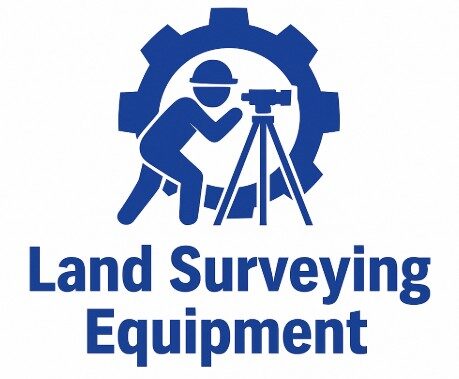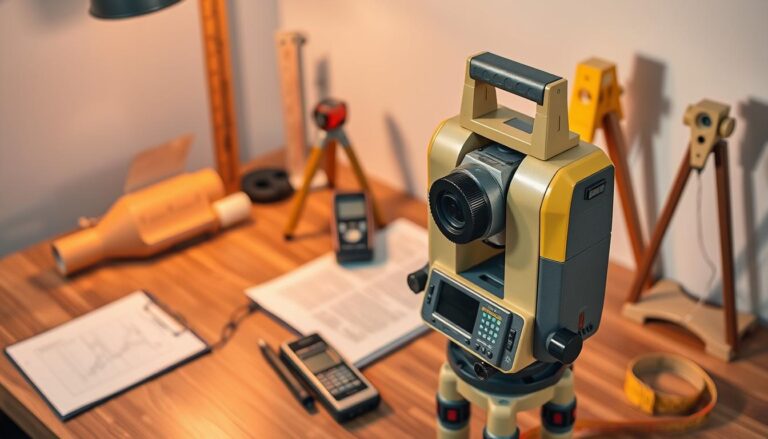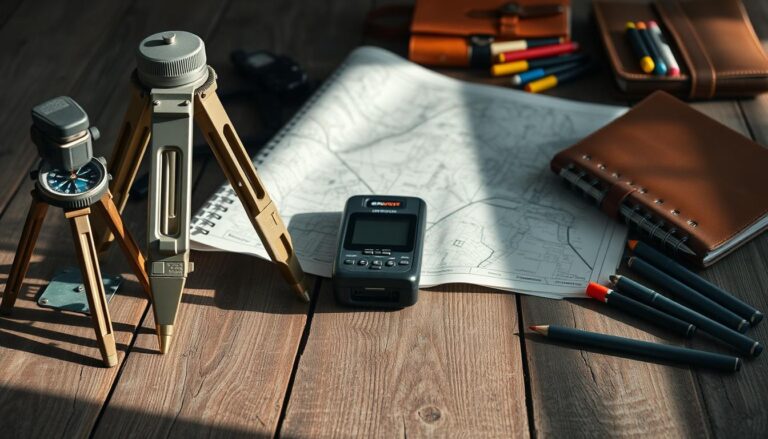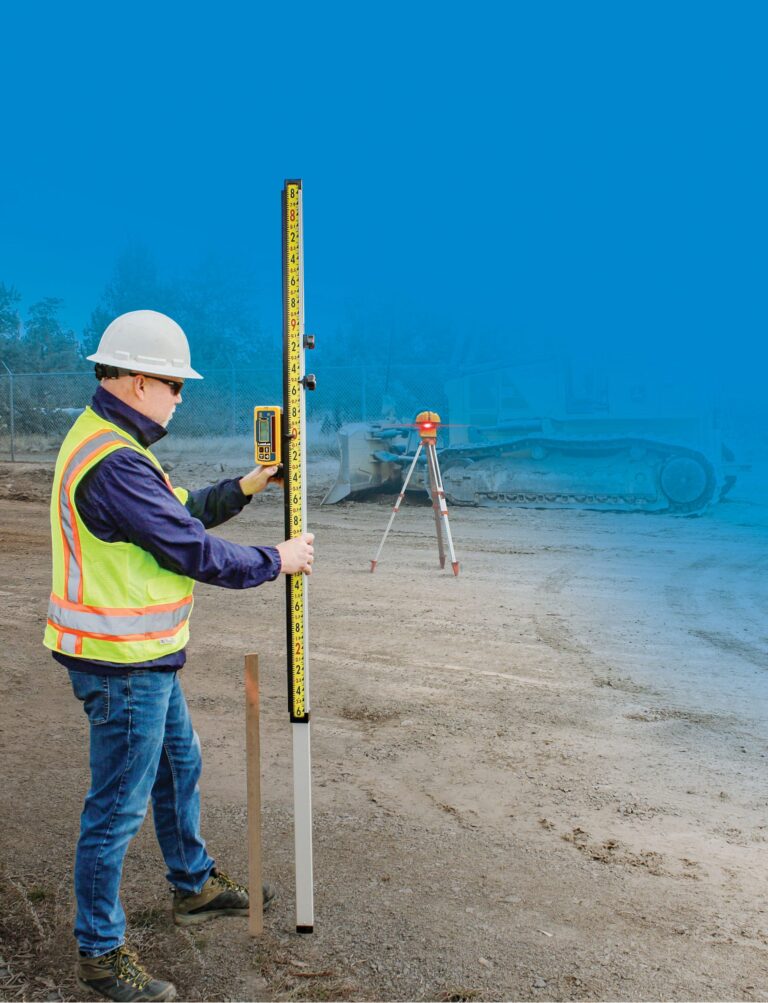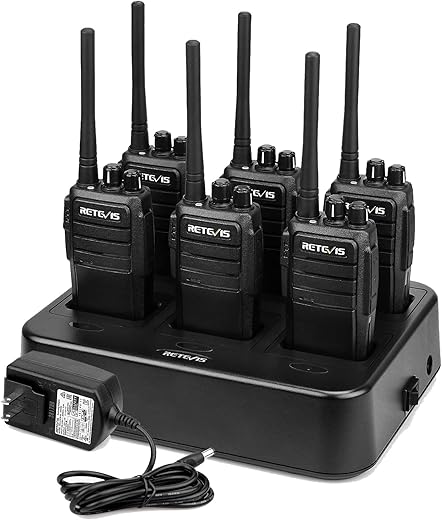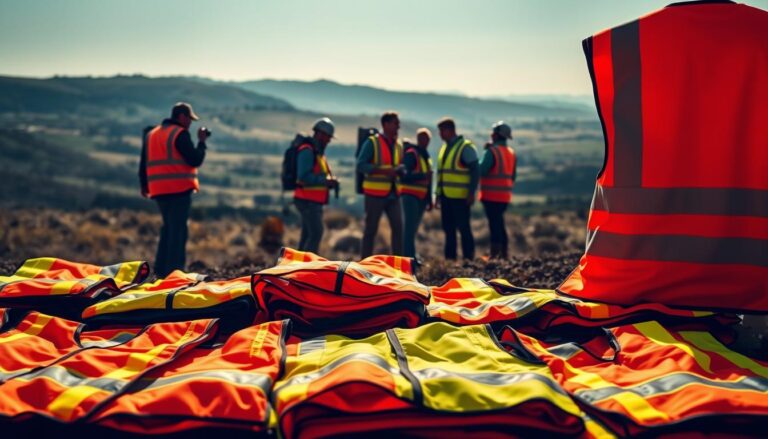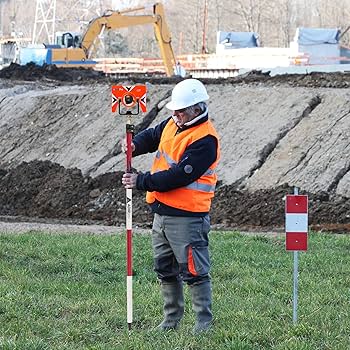Auto Levels or Transit Levels: Which One is Right for You?
Choosing the right leveling tool is key for construction and surveying success. The tool’s accuracy and reliability affect the project’s quality. In the market, you’ll find two main options: auto levels and transit levels.
It’s important to know how these tools differ. They both measure height differences, but they work differently. This means they’re best for different tasks.
Key Takeaways
- Auto levels and transit levels serve the same purpose but differ in their operation and application.
- The choice between the two depends on the specific needs of the project.
- Understanding the strengths and weaknesses of each type is essential.
- Project requirements, such as accuracy and ease of use, play a significant role in the decision-making process.
- Both instruments have their own set of advantages and disadvantages.
Understanding Surveying and Leveling Basics
Surveying and leveling are key in any construction project. They make sure buildings are stable and on a level base. A builder’s level is used to check vertical and horizontal angles, showing its importance.
The Importance of Accurate Leveling in Construction
Getting leveling right is vital for construction success. It ensures the foundation is even, which is essential for a building’s stability and life span. Without accurate leveling, structures can suffer damage and need expensive fixes. So, using the right land surveying equipment is a must in today’s building world.
Accurate leveling is more than just about structure. It also affects how a building looks and works. For example, uneven floors can be a big problem in homes and offices.
Evolution of Leveling Equipment
Leveling tools have changed a lot, moving from old manual methods to new digital ones. Today’s construction level comparison tools are more precise, efficient, and easy to use. Automatic and digital levels have cut down on mistakes, making leveling more reliable.
Older days saw leveling done with simple tools like the dumpy level and spirit level. But now, thanks to new tech, we have more advanced and accurate tools. Now, there’s a wide range of leveling gear, each with its own special features, meeting different project needs.
Auto Levels Versus Transit Levels: Core Differences
Choosing the right leveling tool for your construction project is key. Knowing the differences between auto levels and transit levels is important. Both tools help ensure construction sites are surveyed and leveled correctly, but in different ways.
The main difference is in how they work and what measurements they take. Experts say, “A builder’s level only measures on the horizontal plane. A transit level can measure from both the horizontal and vertical planes.” This difference affects their use in construction projects.
Fundamental Operating Principles
Auto levels, or automatic levels, use a compensator to keep the instrument level. This makes leveling easier, faster, and less prone to error. Transit levels, on the other hand, need manual adjustment to be level and plumb. They offer more control but require more skill and time.
Auto levels use a pendulum system to adjust automatically. This is great for quick and accurate leveling, like finding height differences between points.
Key Features of Auto Levels:
- Automatic leveling mechanism
- Simplified operation
- Reduced human error
Key Technical Distinctions
Transit levels, or theodolite levels, can measure angles in both planes. This makes them versatile for tasks like layout, alignment, and height determination.
Transit levels can measure in both planes, unlike auto levels. This is perfect for complex projects needing detailed surveys.
Key Features of Transit Levels:
- Measurement in both horizontal and vertical planes
- Greater versatility in application
- Manual adjustment for precise control
Knowing these differences is key to picking the right tool for your project. Whether you need something easy to use or versatile for multiple measurements, choose based on your project’s needs.
Auto Levels: Features and Capabilities
Auto levels have made leveling easier and more accurate. They are quick and precise, making them key for surveyors and builders.
How Automatic Leveling Works
Auto leveling uses a compensator to keep the line of sight level. This is done with prisms or mirrors that adjust for tilt. This ensures accurate measurements, reducing human error.
The compensator, like a pendulum or magnetic system, keeps the line of sight level. This makes measurements precise without manual adjustments, speeding up the process.
Types of Auto Levels Available
There are many auto levels for different needs. These include:
- Optical auto levels, which use a telescope to measure height differences.
- Digital auto levels, with a digital readout and extra features like data storage.
- Laser auto levels, which project a line or dot for tasks like aligning fixtures.
Accuracy Specifications
The accuracy of auto levels is key when choosing one. Manufacturers give accuracy specs, usually in mm/km of double leveling. Comparing these specs helps find the right tool for a job.
| Model | Accuracy (mm/km) | Telescope Magnification |
|---|---|---|
| Auto Level X | 1.5 | 32x |
| Auto Level Y | 2.0 | 30x |
| Auto Level Z | 1.0 | 40x |
The table shows how different auto levels vary in accuracy. It’s important to pick one that fits your project’s needs.
Transit Levels: Features and Capabilities
Transit levels are used for surveying and building. They help find the position of lines and objects. This makes them useful in many jobs.
The manual leveling mechanism in transit levels is key. It lets users make precise adjustments. Knowing how it works shows the transit level’s power.
Manual Leveling Mechanism Explained
The manual leveling in transit levels means adjusting the tool to be perfectly level. This is done with coarse and fine screws. It takes skill and focus to get it right.
Experts say, “the precision of transit levels depends on the user’s skill.” This shows how important training and experience are.
Types of Transit Levels on the Market
There are many types of transit levels. Some have optical micrometers for better precision. Others have digital readouts for more advanced use.
- Optical transit levels for traditional surveying tasks
- Digital transit levels with electronic measurement capabilities
- Transit levels with integrated laser technology for enhanced accuracy
Precision and Measurement Range
Transit levels are known for their precision. They can be very accurate, making them great for tough jobs. The range of what they can measure varies, but they cover a lot.
Experts say the pros and cons of transit levels relate to their precision and flexibility. They are very useful but can be hard to use in some situations.
Pros and Cons Analysis
Choosing between auto levels and transit levels is a big decision. Knowing the pros and cons of each is key. Both have their own strengths and weaknesses, important for picking the right tool for your job.
Advantages and Limitations of Auto Levels
Auto levels are easy to use and fast. They give quick and accurate measurements without manual adjustments. This makes them great for tasks needing fast elevation checks. Automatic leveling ensures the instrument is always level, cutting down on mistakes.
But, auto levels have their downsides. They’re made for specific tasks and not as flexible as transit levels. They’re mainly for elevation measurements and might not work for angles. Also, their accuracy can be hit by environmental factors.
| Feature | Auto Levels | Transit Levels |
|---|---|---|
| Ease of Use | High | Moderate |
| Measurement Accuracy | High | High |
| Versatility | Limited | High |
Strengths and Weaknesses of Transit Levels
Transit levels are known for their versatility and precision. Their manual leveling mechanism allows for precise control, making them good for many surveying tasks. They’re great when you need to measure both elevations and angles.
But, transit levels have their own challenges. They need more skill and experience to use right, as manual leveling can be slow and error-prone. They can also be complex for beginners.
As one source says, “If you only need to measure elevations, a builder’s level is enough… But for elevations and angles, a transit level is better.” This shows how important it is to know what your project needs when deciding between auto levels and transit levels.
Comparative Analysis: Accuracy and Precision
In surveying, auto levels and transit levels are often compared. They both aim for accurate measurements but work differently. This makes them better for different situations.
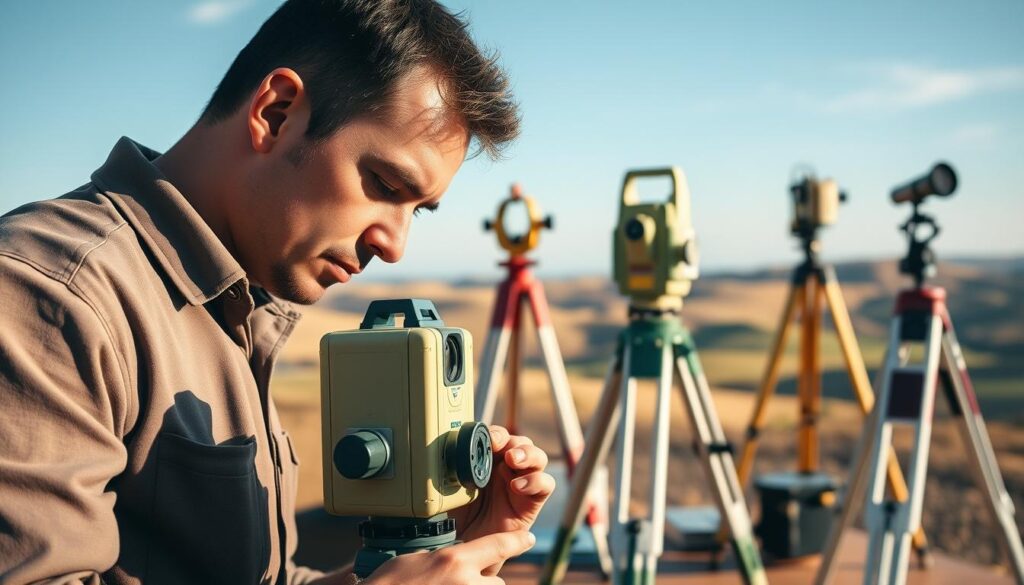
The accuracy of these tools is key to surveying’s success. Auto levels shine in stable places. Transit levels are more flexible in various settings.
Measuring Accuracy in Different Conditions
Measuring in different places requires thinking about the environment. For example, the digital Theodolite Level has a special telescope. It’s not affected by wind or weather.
“The digital Theodolite Level features a telescope with an internal optical magnifying system that is mounted on a base and is not affected by wind or other weather factors.”
Here’s a table showing how auto levels and transit levels compare in different situations:
| Condition | Auto Levels | Transit Levels |
|---|---|---|
| Stable Conditions | High Accuracy | Moderate Accuracy |
| Unstable Conditions | Moderate Accuracy | High Accuracy |
Long-term Precision and Calibration Needs
Long-term precision is vital for these tools. Auto levels usually need less calibration than transit levels. Transit levels, though, need regular checks to stay accurate.
How well these tools work also depends on care and use. Keeping them calibrated and handled right boosts their long-term accuracy.
Practical Applications and Use Cases
Auto levels and transit levels have different roles in surveying. Each has its own use. The success of a surveying project depends on the right choice of leveling tools. This choice is between building survey tools and land surveying equipment.
Choosing between auto levels and transit levels depends on the project’s needs. Auto levels are easy to use and work well in some situations.
Ideal Projects for Auto Levels
Auto levels are great for quick and accurate leveling on flat areas. They’re perfect for construction sites needing a level reference. For example, in road construction, they help measure height differences for grading.
Auto levels are also good when you need to take many readings fast. Their automatic feature reduces errors, making them reliable for big projects.
When Transit Levels Perform Best
Transit levels are versatile and excel in many surveying tasks. They’re best for measuring vertical angles and setting straight lines. Experts say they’re better than other tools for these tasks.
Transit levels are ideal for precise and flexible tasks. They’re great for topographic surveys or complex infrastructure projects. Their ability to rotate and measure angles is key for detailed data.
Real-World Performance: User Experiences
Auto levels and transit levels are put to the test every day. People in construction and surveying share their real-world experiences. Their feedback helps us understand how these tools perform in different situations.
Feedback from Construction Professionals
Construction workers often choose auto levels for their simplicity and speed. A manager mentioned that auto levels cut down leveling time in a big project. Yet, for projects needing exact angles, transit levels are the go-to.
- Auto levels are easy to use, making them perfect for simple leveling tasks.
- Transit levels are better for complex projects that need precise angle measurements.
Surveyor Perspectives and Preferences
Surveyors value the accuracy and reliability of both auto and transit levels. But, their choice depends on the project’s needs. For everyday surveys, auto levels are quick and easy. Transit levels, on the other hand, are great for precise angle measurements and flexibility.
- Auto levels are great for fast, simple surveys.
- Transit levels are best for tasks needing exact angles and flexibility.
Cost Considerations and Value Assessment
When picking between an auto level and a transit level, cost is key. It’s not just about the price you pay first. You also need to think about ongoing costs and if it’s worth it in the long run.
Initial Investment Comparison
The price of auto levels and transit levels can differ a lot. Auto levels might cost more upfront because they’re automated. But, their precision and ease of use can make the cost worth it for many.
Long-term Maintenance Expenses
Think about how much you’ll spend on upkeep over time. Auto levels need less maintenance because they have fewer parts. This can save you money compared to transit levels, which have more parts that can break down.
Return on Investment for Professionals
When looking at the investment, think about how it affects your work. Auto levels can make your job faster, saving you time and money. Transit levels, on the other hand, are good for many tasks, making them a versatile choice.
In summary, the total cost, including the first payment, upkeep, and benefits, is important. By weighing these cost considerations, you can pick the best tool for your job and budget.
Ease of Use and Learning Curve
Choosing between auto levels and transit levels is important for surveying and construction pros. The ease of use affects how well and quickly you can do leveling tasks. This is a big deal when deciding what to use.
The ease of use of leveling tools is more than just learning at first. It’s also about using your skills well in different situations.
Training Requirements for Auto Levels
Auto levels are easy to use, thanks to their automatic leveling mechanism. Training for them covers how to use the tool, set it up right, and read the measurements.
Learning to calibrate the tool and adjust for the environment is also key. This ensures you get accurate readings.
| Training Aspect | Description | Importance Level |
|---|---|---|
| Equipment Setup | Properly setting up the auto level on a stable surface. | High |
| Calibration | Ensuring the auto level is calibrated for accurate measurements. | High |
| Measurement Interpretation | Understanding how to read and interpret measurements. | Medium |
Skill Development for Transit Levels
Transit levels need more skill and hand-eye coordination. You have to adjust the leveling screws by hand to get precise readings. Learning to use transit levels involves mastering this process and knowing how to attach it to a tripod.
It’s important to make sure the transit level is securely attached to the tripod. Also, the leveling screws should not be too tight. This helps keep your measurements accurate.
Durability and Field Performance
Durability and field performance are key for professionals deciding between auto levels and transit levels. These tools must handle various weather conditions and keep their accuracy over time. This is vital for the success of any project.
Weather Resistance and Environmental Factors
Auto levels and transit levels face different weather challenges. Their resistance to weather depends on their design and quality. Auto levels are more compact and sealed, making them better against dust and moisture. Transit levels, with their complex mechanisms, might need extra protection in tough weather.
Longevity and Reliability Comparison
The lifespan of these tools depends on how well they are maintained and used. Auto levels have fewer parts, needing less adjustment and repair. Transit levels need more upkeep because of their manual leveling. Choosing between them depends on the project’s needs and the user’s preference for durability and reliability.
Technological Advancements and Future Trends
Technological innovations are changing the leveling field, bringing new accuracy and efficiency. The evolution of leveling equipment is impressive. Modern tools now have advanced features that make complex tasks easier.
Innovations in Modern Leveling Equipment
Modern leveling equipment has seen big changes, like the digital theodolite. “The digital Theodolite Level features a readout screen that is used to clearly display horizontal and vertical angles.” This has made surveying faster and more accurate, cutting down on mistakes.
Digital Integration and Smart Features
Digital technology has changed leveling equipment, making data collection and analysis easier. Features like wireless connectivity and mobile app use let professionals manage and share data well. This digital transformation is making surveying more user-friendly and team-based.
Making Your Decision: Selection Criteria
Choosing between auto levels and transit levels depends on several key factors. These factors are important for the success of your project.
When choosing the right survey instrument, consider your specific needs and situation. Look at the type and scope of your project, your budget, and your skill level and experience.
Project Type and Scope Considerations
The type and complexity of your project are key in picking the right tool. For example, large construction projects need the precision and flexibility of transit levels. On the other hand, smaller, routine surveys might do well with auto levels.
| Project Type | Recommended Leveling Tool | Key Features |
|---|---|---|
| Large Construction Projects | Transit Levels | High precision, flexibility, and manual control |
| Small to Medium Surveys | Auto Levels | Automatic compensation, ease of use, and efficiency |
Budget Constraints and Priorities
Budget is a big factor in making your decision. Auto levels are often cheaper at first, but transit levels are more durable and versatile in the long run.
“The best investment is in the tools that will serve you well over time, even if they require a higher initial cost.”
Personal Skill Level and Experience
Your skill level and experience also matter. Experienced professionals might like transit levels for their control. Beginners might find auto levels easier to use.
Conclusion
Choosing between auto levels and transit levels depends on what you need. Auto levels are easy to use and set up fast. They’re great for quick leveling tasks. Transit levels offer more control and are better for complex projects needing precision.
What project you’re working on, your budget, and your skill level matter. These factors help decide which leveling tool is best. This ensures your work is accurate and efficient.
Knowing the strengths and weaknesses of each tool is key. This knowledge helps you pick the right one for your project. It improves the quality and reliability of your work.
